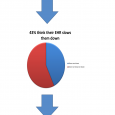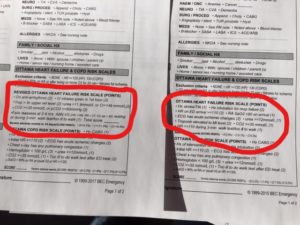How much will it cost to develop our own clinical content?
In Brief:
The costs of developing clinical content internally are high – almost $2 million for the most basic (but useful) content. However, the real impediment to building advanced clinical decision support is the complexity of the project and maintaining such a system.
The Details
Clinical content is invaluable in any emergency department where increasing efficiency, decreasing documentation time, and improving quality of care are priorities (we’ve written before about the importance of clinical content and advanced clinical decision support here).
Hospitals have different options about how to build this content into their information system (we’ve also discussed that hospitals have several options about how to develop clinical content for their emergency department information system). Hospitals can go with basic templates, develop content internally, or turn to a third-party provider (such as BEC) (we also talked about using public content, but this is so similar to using the provided templates that we don’t discuss it here).
When deciding how to develop content, hospitals often ask what it would take to develop their own. What they usually mean is, “what is the time and money cost of internal development?”
We’re going to explore the costs of internal development in this post.
What exactly are you developing?
Before we can get into costs, we need to settle on what exactly needs to be developed. Hospitals will use different content depending on their objectives (we talk about knowledge transfer here and how these objectives can be developed here).
To figure out what you need, you must know where you mean to end up.
For our example we’re going to assume you want enough content to cover all cases with gender- and age- specific content. For simplicity, we’ll ignore the bells and whistles (order sets, procedure notes, etc.), but for these the same logic applies.
How long will development take?
Because of the scale of a content development project, a starting assumption might be that the initial development could take 1 year. However, because ongoing maintenance is required, we’ll project costs over 5 years.
Assuming you have the right experts, developing an up-to-date, best-evidence chart might take 40-80 hours. So, to make 200 charts, this is at least 8000 hours of development time.
Medical evidence, however, is not static. About 20% of charts need to be updated every year. This takes about 20-25 hours per chart, so it works out to be at least 800 hours per year (ignoring the cost of determining what charts need to be updated). In reality, the rest of the charts need 5-10 hours of review time each, meaning at least an extra 800 hours.
Find/hire the key staff
There are quite a few people required to develop even rudimentary clinical content. Even if these are sources internally, you should consider their cost, because they could be working on other projects.
The core staff required to develop clinical content are:
- Project Managers: this is a major project, so a full time project manager is required. A project manager costs about $95k/year.
- High level clerical staff: there is substantial data entry required, and this must be free from any errors. About $45k/year.
- Content developers: these are typically subject matter experts, doctors with appropriate expertise. About $150/hour.
For simplicity’s sake, we’ll ignore the costs of recruiting new staff, management costs, coordination costs, etc.
Summary of Costs
With development costing at least $150/hour, and 8000 hours of development required, the initial investment to develop rudimentary clinical content internally is high. These are low-end estimates; actual costs would likely be much higher.
What we’re ignoring
This quick exercise shows the minimum costs and requirements of developing effective clinical content internally. However, it does not tell the whole story, and it is in fact a bit misleading.
Many of the most important costs and considerations have been ignored in this example. There are many other factors that come into play when developing content.
The most important ignored factor in increased complexity. It sounds easy to pay nurses and doctors to develop clinical content for their hospital’s EHR. The reality is that each is not an expert in every aspect of clinical knowledge, and they have competing interests and priorities. Keeping these experts engaged in a hospital setting is daunting.
Second, the scope of clinical knowledge makes it difficult for one hospital or hospital system to maintain its own content. Thousands of peer reviewed studies are published every year, and the relevance of each must be determined, and this contribution needs to be added as appropriate to the information already accumulated in existing content.
To manage the complexity and quantity of knowledge, a hospital must also develop a knowledge acquisition and translation system if they develop their own content. This is an enormous task that is costly and time consuming.
Summary
Hospitals that are considering adding clinical content to their EHR often wonder whether internal development is a feasible option. While the costs are high, the true impediment to building advanced clinical decision support is the complexity of building and maintaining such a system.
For clinical content to bring value to clinicians, it must make them more efficient and present them with the best available evidence. This evidence is constantly in flux, so the content must also be updated as necessary.
At BEC, we believe the best way to integrate advanced clinical content into emergency department workflow is to outsource it (to us!). This eliminates the complexity and gives clinicians the best tool available so they can focus on improving patient outcomes.




 Next Post
Next Post

